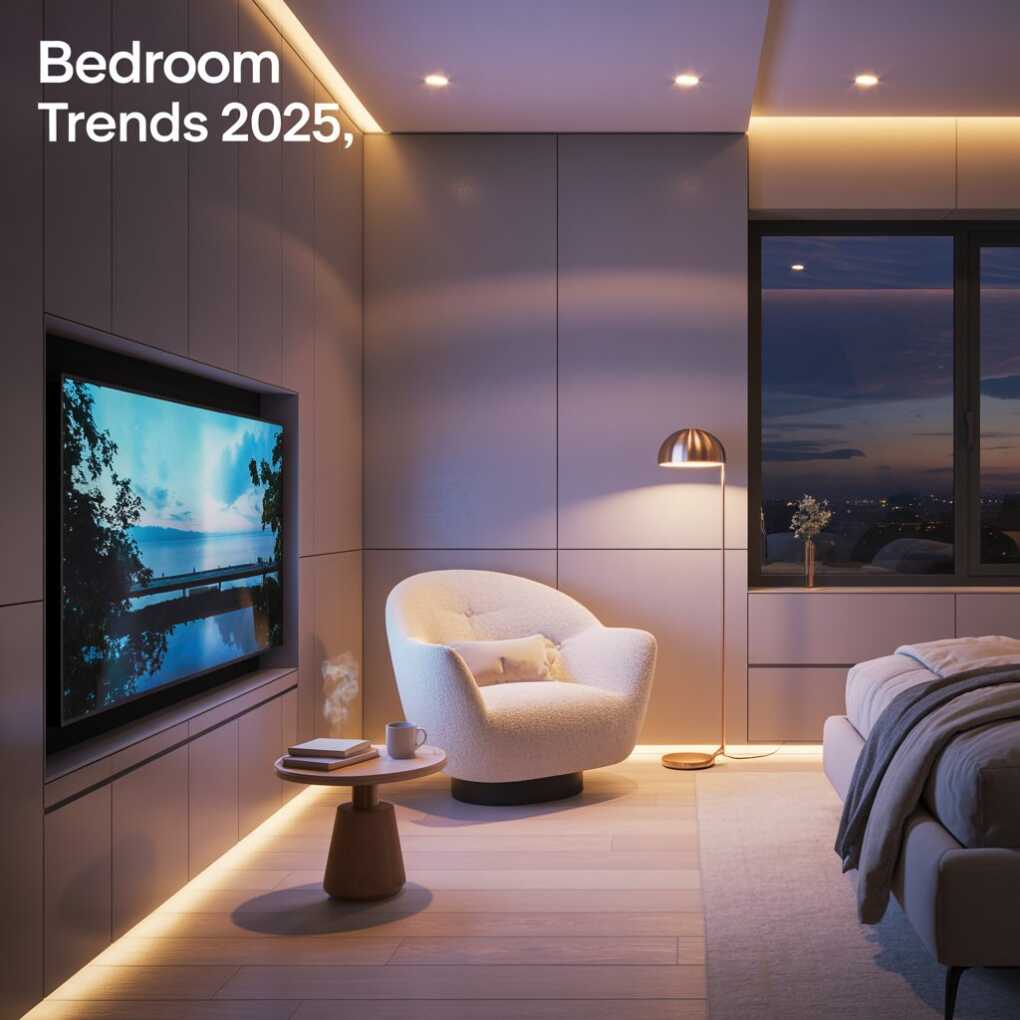The bedroom in 2025 is no longer just a place for sleep, it’s a multifunctional retreat where comfort, wellness and entertainment coexist. As open‑plan living and technology integration continue to reshape how we use our homes, bedrooms are evolving into cinematic sanctuaries, work‑friendly rest zones and restorative havens all at once. This movement is driven by three core priorities: comfort, seamless tech, and calm, intentional design. Below we explore the defining directions for bedrooms this year and how practical choices like TV beds and king‑size beds help bring the vision to life.

Boutique‑Cinema Bedrooms: Movie Night Without the Mess
Movie nights have been upgraded. Instead of carving out a separate media room, more homeowners are creating intimate, cinema‑grade experiences inside the bedroom that don’t sacrifice the space’s restful intent.
- Design essentials: acoustic panels behind the headboard, blackout blinds and dimmable lighting for daytime screenings.
- Why TV beds work: a pop‑up or concealed TV integrated into the bed or footboard offers a full screen for films while staying hidden during the day. This keeps the room serene and uncluttered, perfect when you want entertainment on demand but calm most of the time.
Comfort as the Core: Why King‑Size Beds Still Reign
As screens increasingly enter the bedroom, the need for true comfort intensifies. A modern bed must serve as a sleeping surface, a lounging spot for reading or watching, and sometimes a casual workspace.
- Comfort focus: adjustable bases, zoned mattresses and supportive pillows reduce strain during prolonged lounging or viewing.
- The case for king‑size: a king‑size bed provides generous space for multiple activities and helps couples maintain better sleep hygiene. Choosing breathable, sustainable mattress materials and durable upholstery keeps comfort high without extra maintenance.
Seamless Smart Integration: Make Routines Effortless
Smart homes have matured from novelty to expectation. Bedrooms now use automation to manage light, sound, temperature and media with little friction, so routines like “movie mode” or “sleep mode” engage with a single tap or voice command.
- Useful scenes: an evening scene that dims lights, lowers shades and cues the sound system for a film; sleep mode that lowers temperature, fades lights and mutes notifications.
- Practical tip: choose devices that support open protocols (e.g., Matter‑compatible) and ensure your TV bed or mounted screen integrates with smart hubs to avoid fragmentation.
Warm Minimalism: Tactile Materials and Quiet Luxury
Minimalism has softened into a tactile, warmer aesthetic. Muted palettes, layered textiles and artisan materials make multifunctional bedrooms feel inviting rather than clinical.
- Key ingredients: textured headboards, soft rugs to dampen sound and layered bedding for seasonal adaptability.
- Styling the screen: treat the TV as a design element, concealed behind art, integrated into cabinetry, or hidden in a TV bed, so technology adds to the room’s luxury rather than dominating it.
Space Optimization: Big Comfort in Small Rooms
Not every bedroom is generous in size, but smart planning lets compact rooms deliver king‑size comfort and high‑quality media without feeling cramped.
- Smart moves: floating bedside tables, under‑bed storage and multifunctional furniture. A TV bed becomes a space hero by combining media hardware and storage within the bed’s footprint.
- Visual cohesion: use a consistent colour and material palette for the bed, headboard and media unit to reduce visual fragmentation and make the room feel larger.
Sleep‑Friendly Screen Boundaries: Protecting Rest
With more screens in the bedroom comes a real risk to sleep quality. The 2025 approach emphasises intentional boundaries and furniture choices that support better rest.
- Behavioural tweaks: schedule device downtime, avoid blue light before bed, and use warm, low‑intensity lighting in the evening.
- Furniture strategies: select a king‑size bed that helps define separate lounging and sleeping zones, deeper headboards and low footboards can visually mark where watching ends and resting begins. TV beds help by hiding the screen when it’s not in use, reducing temptation and visual stimulus.
Hospitality‑Inspired Bedrooms: Staycation‑Ready
Travel‑inspired bedrooms that mirror boutique hotels are increasingly popular. Plush king beds, curated lighting and hidden tech create that “checked‑into‑a‑room” sensation at home, ideal for staycations or remote working breaks.
- High‑impact updates: invest in premium bedding, a well‑designed headboard and a discreet TV bed for a “wow” moment that elevates the whole space.
Practical Implementation Checklist
- Start with the bed: choose a king‑size bed that fits your room, leaving enough clearance for circulation and added functions. Prioritise mattress quality first.
- Decide on a TV strategy: if viewing in bed is common, consider a TV bed for a cleaner look; otherwise wall‑mount with a swivel bracket for flexibility. Plan ventilation and cable management.
- Create lighting scenes: at minimum, set up two scenes, movie and sleep, controlled by a smart switch or app.
- Layer sound naturally: rugs, curtains and soft furnishings improve acoustics so you can enjoy films at neighbour‑friendly volumes.
- Prioritise maintainability: choose motorised TV mechanisms and furniture that are serviceable with available spare parts.
Sourcing and Sustainability Shoppers in 2025 care about materials and repairability. Seek king‑size beds made from responsibly sourced timber and mattresses with replaceable layers. For TV beds, favour manufacturers that provide spare parts and repair policies, motorised lifts should be maintainable, not disposable.
Final thoughts
The bedroom trends of 2025 blend comfort and entertainment thoughtfully. By centring sleep quality with a well‑chosen king‑size bed and integrating media in unobtrusive ways, such as a discreet TV bed, you can create a room that works equally well for rest, leisure and everything in between. The key is making technology invisible when it’s not wanted and supremely comfortable when it is.
